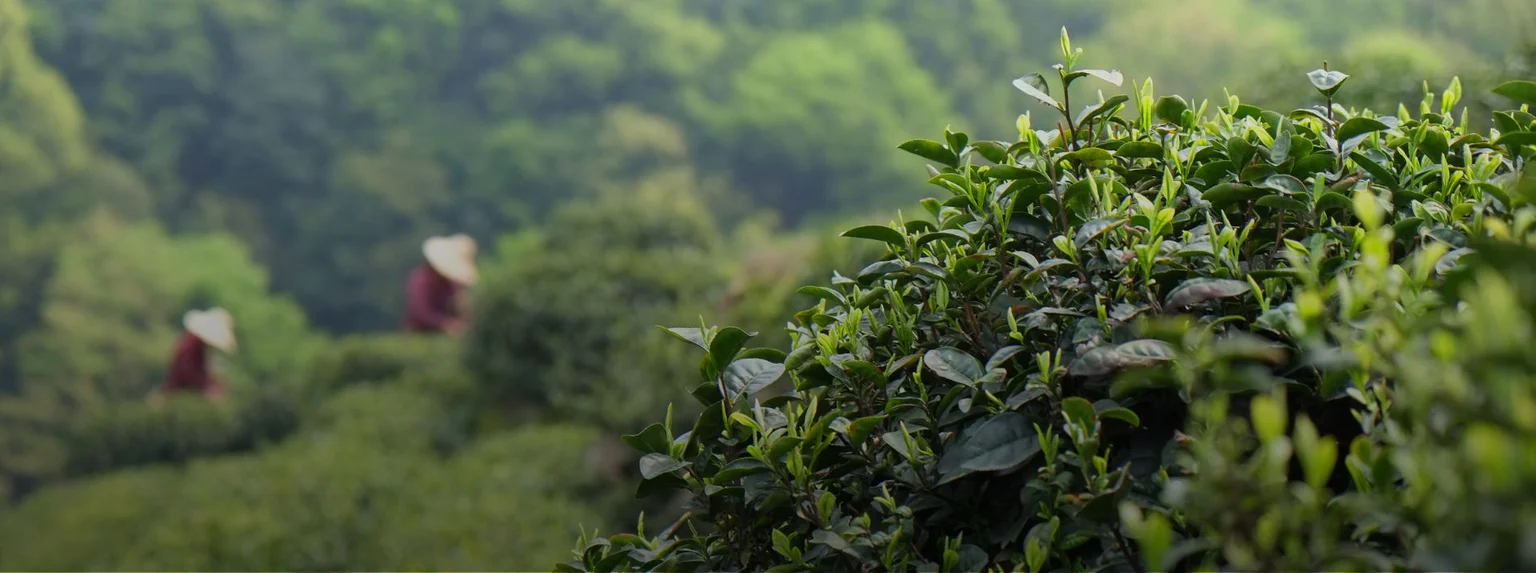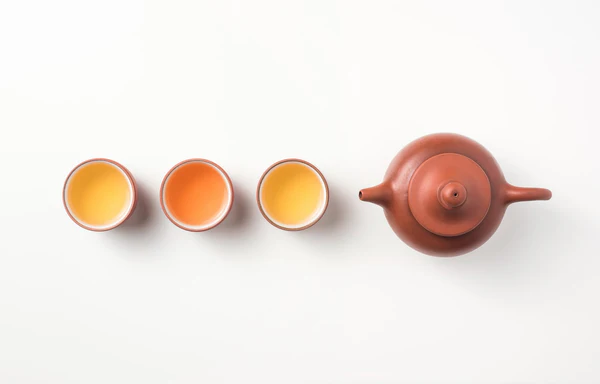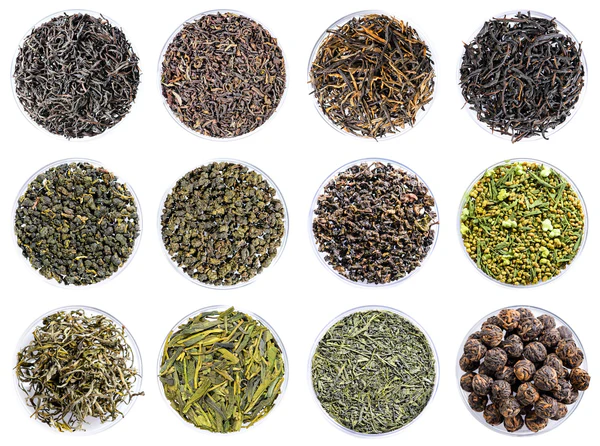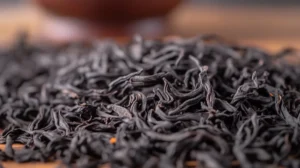
Blog
Comprehensive Guide to Chinese Black Tea

Want to gain a comprehensive understanding of Chinese black tea? This guide can help you. Starting with the basics, it will help you distinguish the characteristics of classic varieties such as Zhengshan Xiaozhong and Keemun black tea; it will explain brewing techniques that you can use at home, including water temperature and tea quantity; it will break down how fermentation and rolling processes affect the taste; it will also discuss the health benefits of black tea and practical methods for avoiding pitfalls when purchasing it. Whether you’re a newcomer to black tea or an enthusiast looking to deepen your knowledge, the valuable content here will meet your needs, helping you easily master the key knowledge about Chinese black tea.
Understanding the Varieties and Regions of Chinese Black Tea
The differences in Chinese black tea varieties primarily stem from the climate, soil, and processing methods of different regions. Understanding the characteristics of these varieties can help you choose the right black tea based on your taste preferences and needs. The following are the main varieties worth noting:
1. Zhengshan Xiaozhong: Produced in Tongmu Pass in northern Fujian Province, this variety is considered the origin of black tea and has two main types. The traditional smoked version is dried using pine wood, imparting a distinctive smoky and woody aroma. The tea broth is deep red and rich, making it ideal for those who prefer a robust flavor. The unsmoked version, produced using modern techniques, features fresh floral and fruity aromas with a sweet and smooth taste, making it accessible to beginners. It is suitable for daily brewing or pairing with pastries.
2. Keemun Black Tea: Originating from the hilly regions of Qimen County in Anhui Province, it is renowned for its “Keemun fragrance”—a blend of floral, honey, and subtle orchid aromas, which are highly popular in international markets. Its tea liquor is translucent orange-red, smooth on the palate, and leaves a distinct aftertaste of sweetness in the throat. It is suitable for pure drinking and is a common choice for Western-style afternoon tea, pairing well with scones or cookies.
3. Yunnan Black Tea: Primarily produced in Fengqing and Menghai, Yunnan, it is made from locally grown large-leaf tea varieties. These tea leaves are thick and rich in nutrients, giving Dianhong tea a bright red color and a rich, refreshing taste with a honey-like aroma. It also has a high durability, retaining a noticeable flavor even after 5-6 infusions. Whether enjoyed hot to warm the body or cold with ice in summer, it showcases its unique freshness and is suitable for those who prefer a robust tea flavor.
4. Jin Jun Mei: Originating from Tongmu Pass in Fujian Province, this is a high-end black tea made exclusively from fresh buds, with the entire process handled by hand. The dry tea has a black and yellow color, and when brewed, it has a rich aroma with floral, fruity, honey, and subtle milky notes. The tea liquor is a bright golden yellow, with a smooth, sweet taste and almost no bitterness. Due to its precious raw materials and complex production process, it is suitable for consumers seeking high-quality black tea, making it ideal for daily consumption or as a gift.
5. Yingde Black Tea: Produced in Yingde City, Guangdong Province, it is cultivated using large-leaf tea seedlings introduced from Yunnan Province, combined with the local climate to create a unique variety. It has a rich and vibrant aroma, similar to Keemun black tea but more intense, with a bright red tea liquor and a robust, full-bodied flavor. Due to its rich texture, it is ideal for blending, such as with milk to make milk tea, where it balances the creaminess of the milk while retaining the tea’s fresh aroma, making it a preferred ingredient for many milk tea shops.
6. Yihong: Originating from the Yichang and Enshi regions of Hubei Province, it was historically exported via the Yangtze River waterway, hence its alternative name “Yihong Gongfu.” Its tea broth is orange-red in color, with a sweet aroma of ripe fruit, a rich and mellow taste, and a distinct aftertaste. There is also a traditional way of drinking it locally: in winter, Yihong is boiled and steeped with a slice of ginger, which enhances the tea’s aroma and adds warmth, making it suitable for cold weather and ideal for those who prefer warm tea drinks.

Types of Chinese black tea
The Production Process of Chinese Black Tea
The production process of Chinese black tea is crucial to its flavor, with the core being the full fermentation of tea leaves to transform them from fresh leaves into black tea. Each step must be precisely controlled to achieve the characteristics of red tea liquor, red leaves, and a sweet, mellow flavor.
1. Wilting: Fresh tea leaves are spread out on bamboo mats or in wilting trays and left to naturally lose moisture in a well-ventilated environment. The duration of this step is adjusted according to weather conditions, typically taking 4–8 hours. After wilting, the leaves become softer, darker in color, and lose their grassy aroma, preparing them for subsequent fermentation. For example, when producing Zhengshan Xiaozhong in Tongmu Guan, Fujian Province, natural mountain winds are used for withering, allowing the tea leaves to lose moisture slowly.
2. Rolling: The withered tea leaves are rolled by hand or machine to break the tea cells, allowing the tea juice to seep out and adhere to the surface. The force and duration of rolling determine the shape of the tea leaves, some rolled into strips, others into granules. This step allows the tea juices to fully interact with the air, initiating the oxidation process. For example, Keemun black tea is rolled into tightly twisted strips to facilitate even fermentation.
3. Fermentation: The rolled tea leaves are piled in a controlled environment with constant temperature and humidity (temperature 20–30°C, humidity above 90%) to allow the tea polyphenols to oxidize and change color. During fermentation, the tea gradually changes from green to copper red, and the aroma shifts from grassy to floral, fruity, or honey-like. The degree of fermentation is critical; for example, Dianhong tea undergoes lighter fermentation to retain more freshness, while Keemun tea undergoes moderate fermentation for a more intense aroma.
4. Drying: The tea leaves are dried using charcoal fire or hot air to remove excess moisture (reducing moisture content to below 7%) while halting fermentation. Traditional Zhengshan Xiaozhong is smoked with pine wood to impart a unique smoky aroma; most black teas are dried with hot air to lock in natural aromas. The dried tea leaves have a crisp texture, making them easy to store and fixing the final flavor of the black tea.
These steps work in tandem, and omitting any step or improper control can affect the quality of black tea. For example, insufficient fermentation results in a green, astringent taste, while over-fermentation leads to a burnt flavor. This is also one of the reasons why black teas from different regions have distinct flavor profiles.
How to Brew Chinese Black Tea
The process of brewing Chinese black tea is not complicated, but paying attention to every detail can enhance the flavor. Mastering the correct method allows the tea leaves to release their best aroma and taste, suitable for both beginners and experienced tea drinkers.
1.Prepare utensils: You can choose from glass cups, white porcelain cups, lidded bowls, or purple clay teapots. Before use, rinse the utensils with hot water to remove dust and preheat them, preventing a sudden drop in temperature when hot water is added, which could affect the tea’s performance.
2.Prepare hot water: It is recommended to use filtered soft water or mineral water to avoid the taste of tap water interfering with the flavor. Boil the water and let it cool to 85-95°C (185-203°F). For tender bud-type tea leaves, use a lower water temperature, while coarser leaves can tolerate a higher temperature.
3.Tea quantity: Generally, 3-5 grams of tea leaves are suitable for 150 milliliters of water. For a richer flavor, you can increase the amount, while a lighter flavor can be achieved by reducing it. Adjust according to personal preference.
4.Brewing process: First, place the tea leaves in the preheated utensils and pour in the prepared hot water. For the first infusion, quickly rinse the tea leaves and discard the water (approximately 3-5 seconds). This step is to clean the tea leaves and awaken them. Starting from the second infusion, let it steep for 30 seconds to 1 minute before pouring out the tea soup. Subsequent infusions can be extended by 10-20 seconds as needed.
5.Drinking tips: When pouring out the tea, try to pour it all out to avoid prolonged steeping, which can cause bitterness. If you wish to steep again, repeat the above steps. If you want to add milk or honey, you may do so, but it is recommended to try it plain first to experience the original flavor.

Chinese black tea
Guide to Selecting Chinese Black Tea
When purchasing Chinese black tea, understanding the basic points can help you avoid poor-quality products and find good tea that meets your expectations. The following is a practical purchasing guide that applies to different purchasing scenarios:
1. Look at the appearance: High-quality black tea has a dark red or brownish-red color, with tight and neat strands, and does not contain excessive fragments or tea stems. If the color appears grayish, has mold spots, or contains a large amount of impurities, it may be a product that was improperly stored or processed.
2. Smell the aroma: Take a small amount of dry tea and bring it close to your nose. Fresh black tea should have a natural floral, fruity, honey, or woody aroma, without any burnt, moldy, or pungent odors. After brewing, the aroma should remain consistent and stable, not dissipating quickly.
3. Observe the tea liquor color: After brewing, the tea liquor should be clear and translucent, with an orange-red, deep red, or golden yellow hue (depending on the variety). If it is cloudy, has sediment, or is too light or dark in color, it may be of poor quality.
4. Taste the flavor: It should be smooth and rich on the palate, with a lingering sweetness, and no noticeable astringency, bitterness, or off-flavors. Low-quality black tea often has a thin taste or a raw, green or burnt flavor.
5. Check the origin information: Well-known black teas have clear production areas, such as Tongmu Guan in Fujian and Qimen in Anhui. Products labeled with specific production areas on the packaging generally have better quality assurance, so avoid choosing “generic black tea” with unclear origins.
6. Pay attention to storage conditions: When purchasing, check if the packaging is sealed. High-quality black tea is often packaged in aluminum foil bags or sealed cans, with a shelf life of approximately 1-2 years. For loose-leaf tea, ensure the retailer stores it in a dry, odor-free environment.
Following these standards increases the likelihood of purchasing high-quality Chinese black tea, making it a reliable choice for both personal consumption and gifting.

Chinese Black Tea Buying Guide
The Health Benefits of Chinese Black Tea
Chinese black tea not only has a mellow taste, but also contains many beneficial ingredients for the body. Drinking it in moderation can bring many health benefits. The following are the main health benefits that have been verified:
1. Supports cardiovascular health: Black tea is rich in flavonoids, which help relax blood vessels and improve blood circulation. Regular moderate consumption can positively contribute to maintaining normal cardiovascular function.
2. Antioxidant properties: Fermented black tea retains various antioxidant components that help reduce free radicals in the body, providing the daily antioxidant support the body needs.
3. Mildly invigorating: Black tea contains moderate levels of caffeine, which can help keep you alert. At the same time, the theanine in black tea can alleviate the excitability caused by caffeine, providing a milder experience.
4. Promotes digestion: Warm black tea can gently stimulate gastrointestinal motility. Drinking it in moderation after meals can help relieve bloating and aid digestion.
5. Hydration and Mineral Supplementation: Brewed black tea is an excellent choice for hydration and also provides small amounts of minerals such as potassium and magnesium, contributing to the body’s daily nutritional needs.
It is important to note that the health benefits are based on moderate consumption. Excessive caffeine intake may cause discomfort, so it is recommended to limit intake to 3-4 cups per day.
Frequently Asked Questions About Chinese Black Tea
Q: What is the difference between Chinese black tea and Indian black tea?
A: Chinese black tea typically has a delicate floral or fruity aroma or honey scent, with a smooth and mellow taste, making it ideal for drinking on its own. Indian black tea, on the other hand, has a more intense and bold aroma, with a robust and full-bodied flavor. It pairs well with milk or sugar, creating a balanced taste. The two styles differ significantly in flavor profile.
Q: Can Chinese black tea be mixed with milk or honey?
A: Absolutely. Adding milk to full-bodied black tea can neutralize bitterness, making the texture smoother; adding honey adds a touch of sweetness without overpowering the tea’s aroma. Both combinations are common, and you can experiment based on your personal preferences.
Q: Does Chinese black tea have a high caffeine content?
A: Not particularly high. It is slightly lower than green tea, with approximately 20-40 milligrams per cup. Moderate consumption is unlikely to result in overconsumption, and the stimulating effect is mild, unlike coffee, which can easily cause nervousness.
Q: Which is better, loose-leaf Chinese black tea or packaged tea?
A: It depends on storage conditions. Packaged tea (such as in sealed cans or aluminum foil bags) is easier to store and suitable for long-term storage; loose-leaf tea, if fresh and stored properly, also has good flavor. When purchasing, ensure there are no unusual odors.
Q: Does Chinese black tea need to be refrigerated?
A: Generally not. Store it in a dry, light-protected, sealed container at room temperature to maintain flavor; refrigeration may actually affect quality due to moisture or odor absorption, unless it won’t be consumed within a short period.
Q: What does “gongfu” mean in Chinese black tea?
A: It refers to meticulous craftsmanship. This type of black tea involves intricate production steps, such as rolling and fermentation, which are time-consuming and labor-intensive, hence the name “gongfu black tea,” such as Qimen Gongfu and Dianhong Gongfu, which have a richer and more robust flavor.
